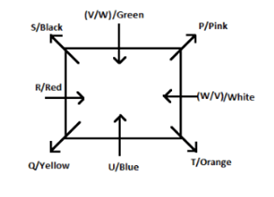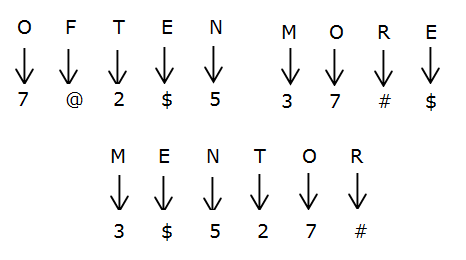Dear Aspirants, Our IBPS Guide team is providing new series of Reasoning Questions for IBPS PO Prelims 2019 so the aspirants can practice it on a daily basis. These questions are framed by our skilled experts after understanding your needs thoroughly. Aspirants can practice these new series questions daily to familiarize with the exact exam pattern and make your preparation effective.
Check here for IBPS PO Prelims Mock Test 2019
[WpProQuiz 7031]
Directions (1-5): Study the following information carefully to answer the given question:
Eight friends P, Q, R, S, T, U, V and W are sitting around a square table in such a way that four of them sit at four corners of the square while the other four sit in the middle of each sides. All of them like different colours viz. green, blue, red, black, white, pink, yellow and orange. The one who sit at the four corners do not face towards the centre while those who sit in the middle of the sides do not face outside.
Note: If two persons are said to be facing each other; then they both were sitting opposite to each facing towards the centre.
R likes red colour and sits third to the right of T. Only two persons sit between T and the one who likes green colour. S likes black colour and is an immediate neighbour of R. P likes pink colour. Q sits second to the right of the one who likes orange colour. The one who likes red colour faces the one who likes white colour. U is not an immediate neighbour of the one who likes white colour. U likes blue colour. Neither V nor W likes orange colour.
1) Who sits exactly between P and T when counted from the right of P?
a) Q
b) U
c) The one who likes green colour
d) The one who likes white colour
e) Cannot be determined
2) What is the position of V with respect to R?
a) Second to the left
b) Third to the right
c) Fourth to the left
d) Third to the left
e) Cannot be determined
3) Four of the following five are alike in a certain way and so form a group. Who among the following does not belongs to that group?
a) R
b) U
c) The one who likes green colour
d) The one who likes white colour
e) The one who likes yellow colour
4) What is the position of S with respect to the one who likes yellow colour?
a) Second to the left
b) Second to the right
c) Third to the right
d) Fourth to the right
e) Cannot be determined
5) How many persons sit between the one who likes yellow colour and the one who likes pink colour?
a) One
b) Two
c) Three
d) Four
e) Cannot be determined
Directions (6-8): In each of the following questions, relationship between different elements is shown in the statements followed by conclusions. Find the conclusion which is definitely true.
Give answer:
a) If only conclusion I follows.
b) If only conclusion II follows.
c) If either conclusion I or II follows.
d) If neither conclusion I nor II follows.
e) If both conclusions I and II follows.
6) Statements:
P ≥ V ≥ O = M ; K ≤ L ≤ O = E
Conclusions:
I) K ≤ V
II) E = M
7) Statements:
Q ≥ N = S ≥ P ; R ≤ C ≤ P ≤ D
Conclusions:
I) R < S
II) N = R
8) Statements:
Z < Y = X ≤ W ; U ≥ V >W ≤ S < T
Conclusions:
I) V < Z
II) T > Y
9) In a certain code ‘OFTEN’ is written as ‘7@2$5’ and ‘MORE’ is written as ‘37#$’. How is ‘MENTOR’ written in that code?
a) 3$572#
b) 35$27#
c) 3$257#
d) 3$527#
e) None of these
10) If all the alphabets are rearranged within itself as they appear in the English dictionary in the word “POSTGRADUATE” then which of the following will be third to the right of the one which is ninth from the right end?
a) A
b) O
c) P
d) R
e) None of these
Answers :
Directions (1-5):
R likes red colour and sits third to the right of T. Only two persons sit between T and the one who likes green colour. The one who likes red colour faces the one who likes white colour. S likes black colour and is an immediate neighbour of R. P likes pink colour. U likes blue colour. Q sits second to the right of the one who likes orange colour. U is not an immediate neighbour of the one who likes white colour. We have following possibilities–

Now, neither V nor W likes orange colour. This will eliminate case 1. So the final arrangement will be—

1) Answer : d)
2) Answer : e)
3) Answer : e)
4) Answer : b)
5) Answer : c)
Directions (6-8):
6) Answer : e
K ≤ L ≤ O = E = M ≤ V
7) Answer : c
Q ≥ N = S ≥ P ≥ C ≥ R
8) Answer : b
Y = X ≤ W ≤ S < T
9) Answer : d

10) Answer : c
POSTGRADUATE = AADEGOPRSTTU





